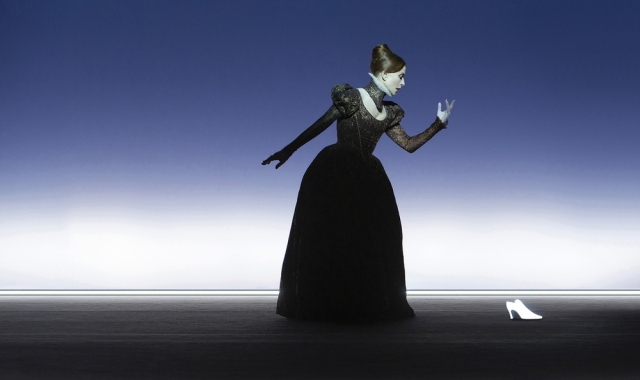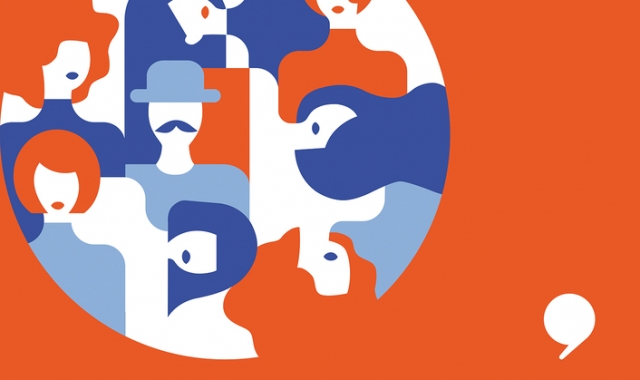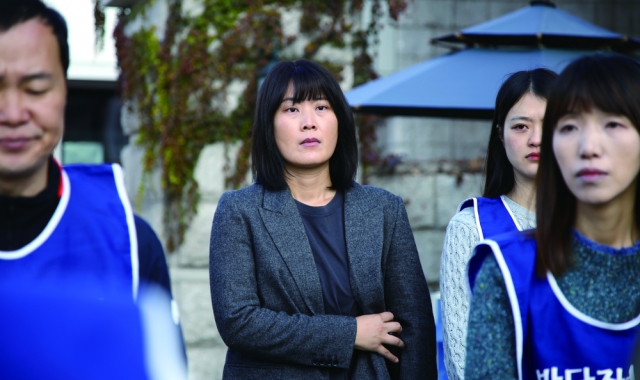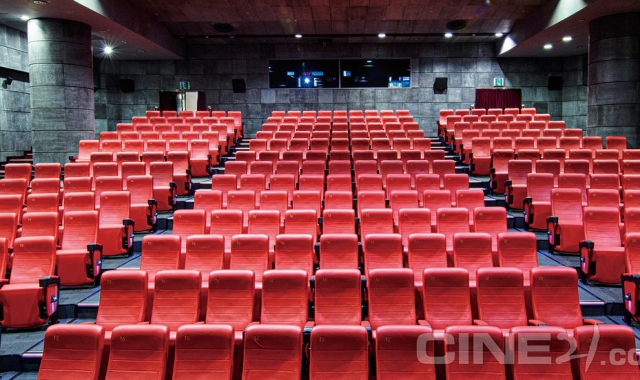
필자가 1950년대 한국영화에서 제일 좋아하는 것 중 하나가 사운드다. 이런 말을 하는 것은 우스워 보일지도 모른다. 이 전후 시기 영화들은 가장 원초적인 녹음 장비로 만들어졌고, 대부분 세트에서 녹음되기보다는 스튜디오에서 후시로 더빙된 것이다. 그럼에도 그 결과는 종종 최면적이었다. 당시의 많은 영화들에는 깊은 정적이 팽배했다. 주요 인물이 북적거리는 거리를 건널 때도, 관객은 단 한대의 차가 경적을 울리는 소리만 들을 수도 있다. 배우가 말할 때 그들의 말소리는 유별나게 가깝고 친밀하게 들린다. 마치 외부세계의 소리가 가장 기본적인 부분만 남기고 사라진 듯한 느낌을 주었다. 마치 오케스트라 전체를 단 하나의 하프시코드만으로 줄여놓은 것처럼. 비록 이런 방식이 분명 의도된 것은 아닐지라도 심지어 실험적으로 느껴지기까지 한다(안타깝게도 이런 영화사운드의 특이한 양상은 1960년대 부상한 제작물 증가로 사라진 것 같다. 당시 대부분의 한국영화는 터널에서 녹음된 것처럼 들린다).
물론 요즘 한국 영화감독들은 최고가의, 최상의 녹음과 믹싱 장비를 갖추고 작업한다. 사운드 영역에서의 창조적 가능성은 특수효과와 일반적인 환경의 사운드 모두에서 이전보다 훨씬 커졌다. 그렇지만 영화 스탭들이 이제 그 어느 때보다 고품질의 사운드를 만들어낼 수 있다 하더라도 때때로는 침묵을 다루는 데 그만큼 능숙한지 궁금해지기도 한다.
최근 나온 그래픽디자인에 관한 흥미로운 책(<그래픽디자인의 요소들> 알렉스 W. 화이트 지음)을 얼마 전에 읽었다. 디자이너들이 단지 배경을 채우려 하기보다는 흰색의 공간을 전체 디자인의 능동적인 부분으로 봐야 한다는 기본적인 아이디어를 중심으로 구성되어 있다. 물론 동양화는 이미 여러 세기 동안 이런 개념을 소화해왔다. 분명히 동일한 원리가 또한 영화의 사운드에도 적용될 수 있을 것이다.
효과적으로 사용됐을 때, 정적은 나중에 움직임이 터져나오거나 감정이 굽이쳐오를 때 더 강력하게 만들어줄 수 있다. 홍콩 감독 두기봉의 가장 뛰어난 강점 중 하나는 액션영화에서 영화를 더 흥분되게 하기 위해 정적과 고요를 어떤 방식으로 짜넣을지 알고 있다는 것이다. 더욱 삼가는 수준에서, 펜엑 라타나루앙 감독의 <라스트 라이프 라스트 러브>와 이치가와 준 감독의 <토니 타키타니> 같은 최근 개봉영화들이, 영화감독이 고요함을 부정적이기보다는 긍정적인 것으로 접근했을 때 성취할 수 있는 것임을 보여준다.
시각적인 측면에서 한국 영화인들은 세계 그 누구와도 경쟁할 수 있는 수준이지만, 사운드의 측면을 그 정도로 능숙하게 다룰 수 있는 감독들은 몇 안 되는 듯하다. 한국의 공포영화들은 관객이 무서운 장면이 언제 나오는지 알 수 있도록 음향효과들이 너무 빨리 튀어나온다. 음향효과가 과도하게 집중되어 있다. 예술영화의 경우에도 사실적인 사운드를 강조한다는 것이, 때때로 영화가 성취하려고 하는 것에 역효과를 낳기도 한다. 올해 부산영화제에서 제일 좋았던 영화 중 하나인 조창호 감독의 <피터팬의 공식>은 기억에 남을 만한 캐릭터와 예측하지 못할 초현실적인 분위기를 만들어내는 면에서 뛰어난 능력을 보여주었다. 그러나 그 비현실적인 분위기에, 지나치게 사실적인 사운드는 도움이 되지 않았다. 모든 나뭇잎이 바스락거리는 소리와 모든 새가 지저귀는 소리를 들을 수 있을 정도였던 것이다. 어떤 종류의 영화에서는 사운드에 대해 더 실험적인 접근을 하는 것, 이것이 한국의 새로운 영화감독 세대에 자신만의 목소리를 찾게 해줄지도 모른다.
One of my favorite things about Korean films from the 1950s is the sound. It may seem ridiculous to make such a statement; after all, films from this post-war era were made with the most primitive recording equipment, and were generally dubbed later in a studio rather than recorded on set. Nonetheless the end result is sometimes hypnotic. A deep silence pervades much of these films. When the main characters cross a busy street, we may hear only a single car horn beeping. When the actors speak, their words sound unusually close and intimate. It is as if the sound of the outside world were reduced to its most fundamental parts: a single harpsichord instead of a full orchestra. Although it surely wasn't intended this way, at times it can even feel experimental. (Sadly, this particular aspect of film sound seems to have been lost in the production boom that emerged in the 1960s -- most Korean films from that decade sound like they were recorded in a tunnel)
These days, of course, Korean filmmakers have the most expensive, state-of-the-art recording and mixing equipment available to them. The creative possibilities in the realm of sound are much greater than they ever have been before, both in terms of special effects and ordinary, ambient sound. However, even if film crews can now produce sound of a higher quality than ever before, I sometimes wonder if they are as skilled at handling silence.
Recently I read an interesting recent book on graphic design (Alex W. White's The Elements Of Graphic Design) that is structured around the basic idea that designers must consider white space as an active part of the overall design, rather than just background to be filled. Of course, Asian painting has embraced this very idea for centuries. Surely the same principles can also apply to sound in a film.
Silence, when used effectively, can make later bursts of action or swells of emotion much more powerful. One of the greatest strengths of Hong Kong director Johnnie To is that he knows how to incorporate silence and stillness into an action film to make it even more exciting. On a more restrained level, some recent commercial releases - Pen-ek Ratanaruang's Last Life in the Universe and Ichikawa Jun's Tony Takitani - demonstrate what can be accomplished when filmmakers approach silence as a positive rather than a negative.
Visually, Korean filmmakers can compete with anyone else in the world, but it seems that there are few directors in Korea who are able to handle this aspect of sound with the same degree of skill. Horror films seem to be especially questionable in this regard, with over-enthusiastic sound effects jumping in too soon so that viewers know when to expect the scary parts. But in terms of arthouse cinema as well, an emphasis on realistic sound can sometimes work against the effect a film is trying to achieve. One of my favorite films from this year's Pusan festival was Cho Chang-ho's The Peter Pan Project for its ability to create a surreal, unpredictable atmosphere and memorable characters. Yet the film's unreal mood received no assistance from the hyper-realistic sound recording, in which we could hear every leaf rustle and every bird twitter. A more experimental approach to sound in certain films might help Korea's newest generation of filmmakers to really find their own voice.






